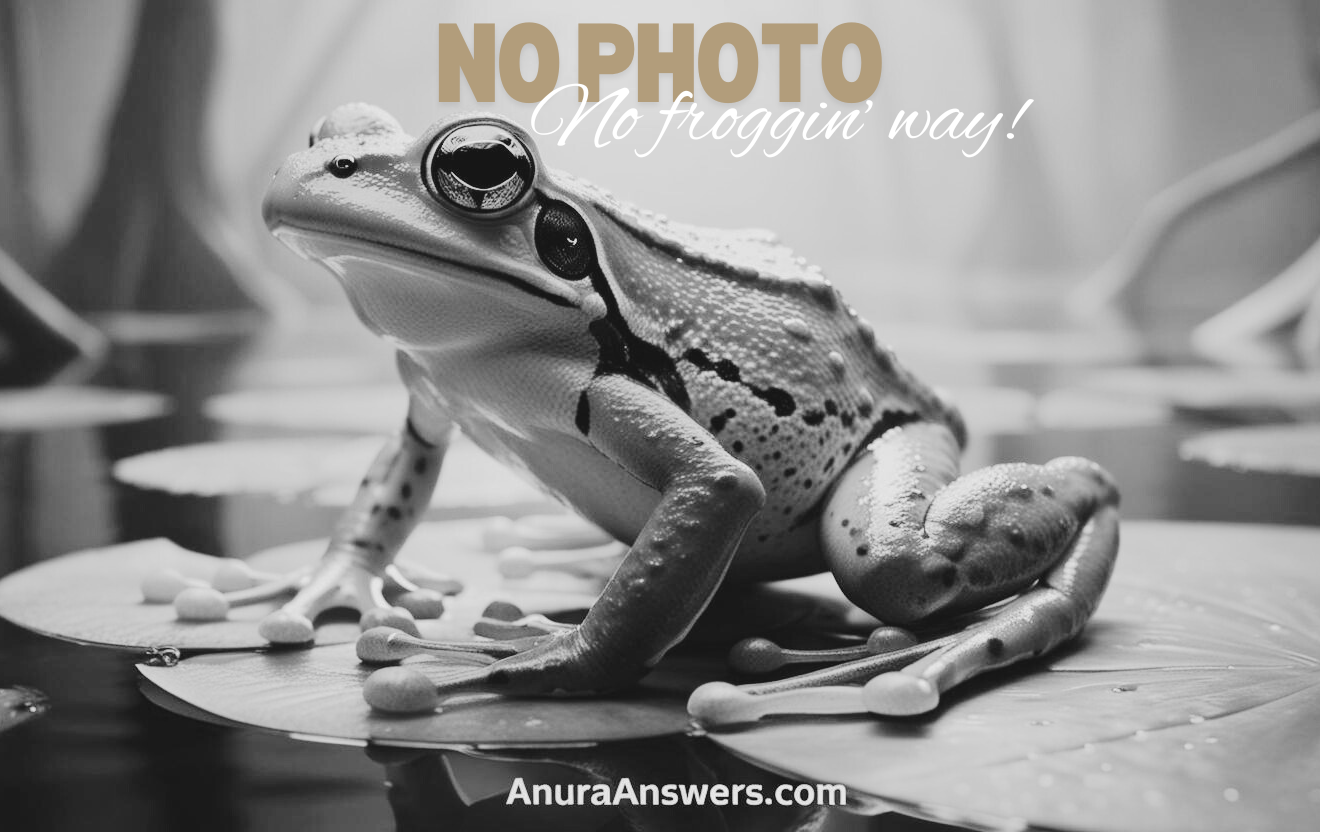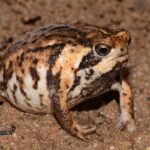- Introduction: Meet Brazil's Mysterious Forest Jewels
- Taxonomy and Classification: Understanding the Family Tree
- Natural Habitat: Life in Brazil's Atlantic Rainforest
- Physical Characteristics: Mastering the Art of Camouflage
- Behavior and Life Cycle: Hidden Lives on the Jungle Floor
- Ecological Role: Essential Guardians of Ecosystem Health
- Threats and Conservation Status: Preserving a Fragile Forest Icon
- Cultural and Scientific Significance: Beyond the Forest Edge
- Conclusion: Advocating for the Quiet Giants of Biodiversity
Introduction: Meet Brazil’s Mysterious Forest Jewels#
Beneath the lush, emerald canopy of Brazil’s celebrated Atlantic rainforest, amidst layers of decaying leaves, moss-covered logs, and gently flowing streams, lives a cryptic creature whose understated charm and ecological importance often escape notice—the elusive frog known as Ischnocnema gehrti. Quiet and unassuming at first glance, this leaf-litter dweller plays an essential ecological role, reflecting the overall health and diversity of its rainforest habitat.
Belonging to a group commonly called leaf frogs or forest frogs, Ischnocnema gehrti exemplifies nature’s resilience and adaptation in challenging jungle environments. Surviving in dense, shadowy worlds of browns and greens, it avoids notice except for those attentive observers who carefully follow its soft calls echoing faintly through twilight forest mists.
Curiously, this frog has an unusual trait: rather than laying eggs in water as many frogs do, Ischnocnema gehrti employs direct development—skipping the aquatic tadpole stage completely, emerging from eggs as fully formed miniature frogs. It’s a unique evolutionary adaptation that ensures survival in its damp but ever-changing habitat.
Taxonomy and Classification: Understanding the Family Tree#
Scientifically classified within the large and diverse frog family Brachycephalidae, the genus Ischnocnema encompasses several species adapted to terrestrial habitats within tropical ecosystems. First described scientifically by Miranda-Ribeiro in 1926, Ischnocnema gehrti honors the name of scientific pioneer and naturalist Ernst Gehrt, who contributed significantly to Brazilian zoological research during the early twentieth century.
Members of this genus—often cryptically colored and well-camouflaged—tend to inhabit leaf-litter habitat floors, blending inconspicuously with their surroundings. Their close relatives include fellow Brazilian inhabitants such as Ischnocnema guentheri and Ischnocnema henselii, species that share evolutionary traits adapted for a secretive forest existence.
Natural Habitat: Life in Brazil’s Atlantic Rainforest#
The vast Atlantic Forest biome of Brazil sets the stage for the life story of Ischnocnema gehrti. Predominantly occupying the southeastern Brazilian states, such as São Paulo, Rio de Janeiro, and parts of Espírito Santo and Minas Gerais, this species is deeply tied to humid, evergreen environments characterized by dense vegetation, intermittent rainfall, and a rich abundance of life.
In these forests, a thick, spongy carpet of fallen leaves and decaying plant matter creates both shelter and sustenance for this elusive amphibian. Moisture retained in the leaf litter provides essential humidity, critical for their survival. Here, amid fungi-covered logs gently weathering years of rainforest storms, these frogs find an ideal combination of coverage and microclimate. Rarely ascending higher vegetation, they prefer the security, camouflage, and food-rich environment at ground level.
Microhabitat Specialization#
The intricately layered structure of the forest floor habitat ensures that temperature and humidity remain consistently ideal for the species. This microhabitat specialization allows these frogs to minimize competition and predation pressure, quietly performing their vital ecological functions largely hidden from view.
Physical Characteristics: Mastering the Art of Camouflage#
The cryptic appearance of Ischnocnema gehrti is one of its greatest tools for survival. Measuring between 20 to 30 millimeters, this small frog exemplifies efficient evolutionary design. Their dorsally compressed bodies blend seamlessly into the brown, reddish-brown, and grayish hues of the rainforest leaf litter, making visual detection by predators—and inquisitive naturalists—a challenging undertaking.
A closer look reveals subtle beauty. Their skin gently mottles to mimic exact veins and patterns of decaying leaves, a tapestry perfected by generations of natural selection. With large, inquisitive eyes adapted to limited light, they skillfully navigate the dim nursery of their rainforest home. Their limbs, slender yet strong, are perfectly suited for hopping through dense detritus or clinging lightly to coarse textures as necessary.
Adaptive Significance of Camouflage#
Effective camouflage helps these amphibians avoid predators such as birds, snakes, and small mammals. This adaptation transcends mere concealment—it’s an exquisite evolutionary dance, fine-tuned over millennia to where these frogs can move and forage with minimal risk.
Behavior and Life Cycle: Hidden Lives on the Jungle Floor#
Despite their soft-spoken demeanor, Ischnocnema gehrti display fascinating behaviors, particularly during their breeding season, generally coinciding with rainy periods when the forest comes dramatically alive. Males signal their territory and readiness to mate with short, delicate calls, reminiscent of faint musical chirps blending elegantly into the forest orchestra.
Following successful mating, females lay clutches of eggs hidden among leaf litter and sheltered microhabitats. Unlike more familiar frogs, their eggs bypass aquatic tadpole stages, directly hatching into tiny froglets. Each hatchling is a perfect miniature representation of its parents—a remarkable feat of embryonic development perfectly suited to survival in the leaf litter.
Feeding and Foraging Behavior#
With stealth and precision, Ischnocnema gehrti preys upon small invertebrates inhabiting the leaf litter ecosystem. Ants, mites, springtails, and small beetles make up much of their diet, helping regulate insect populations and maintaining the delicate balance of their forest homes.
Ecological Role: Essential Guardians of Ecosystem Health#
Amphibians like Ischnocnema gehrti hold a critical ecological niche within their habitats. Their voracious appetite for tiny arthropods directly influences population control of forest floor insects, playing an essential role in nutrient recycling and soil health. At the same time, these frogs themselves serve as prey for snakes, birds, and small mammals, becoming central connecting points in the forest food web.
Furthermore, amphibians are often considered ecological indicators. A healthy population of these leaf-litter frogs signals a thriving, balanced ecosystem—a vital message in regions where biodiversity often faces significant threats.
Threats and Conservation Status: Preserving a Fragile Forest Icon#
Although relatively understudied compared to more charismatic wildlife, Ischnocnema gehrti faces significant and persistent threats primarily from habitat loss. The Atlantic forest of Brazil has experienced historic deforestation rates, leaving fragmented habitats where these frogs struggle to maintain stable populations. Agriculture expansion, urbanization, pollution, and climate alterations further compound their vulnerability.
Currently classified under ‘Least Concern’ on the IUCN Red List due to wide distribution, conservationists remain cautious. This designation doesn’t indicate invulnerability; instead, it underscores a need for greater habitat protection and continued monitoring to prevent unexpected population declines.
Conservation Initiatives and Community Engagement#
Efforts to save Brazil’s Atlantic Forest benefit countless species, including the inconspicuous but vital Ischnocnema gehrti. Habitat restoration projects, ecological corridors connecting fragmented wilderness areas, and local educational initiatives focused on biodiversity protection represent essential steps toward ensuring their survival.
Cultural and Scientific Significance: Beyond the Forest Edge#
While not widely recognized outside the scientific community, species such as Ischnocnema gehrti hold potential for significant scientific insight, particularly in evolutionary biology studies. Their unique reproductive strategy—a direct development system—draws research interest, potentially informing studies on amphibian adaptation, evolution, and responses to climate change.
Culturally, indigenous and local communities traditionally regard the general class of small rainforest frogs with affection and respect, recognizing their importance as indicators of environmental health and vitality. In this subtle way, Ischnocnema gehrti serves as a quiet, consistent reminder to humanity of our interconnectedness with nature.
Conclusion: Advocating for the Quiet Giants of Biodiversity#
Through understanding the biology, behavior, and significant ecological role of lesser-known species like Ischnocnema gehrti, each of us can become advocates for rainforest ecosystems. Ensuring this remarkable amphibian’s persistence requires support and recognition of conservation efforts, from safeguarding habitats to empowering local communities.
Let our curiosity and stewardship extend toward every unique inhabitant of our incredible planet—including the secretive leaf litter frogs quietly orchestrating the subtle rhythms of the Atlantic Forest. In protecting species like Ischnocnema gehrti, we preserve not only biodiversity but also the extraordinary beauty and wonder of life itself.







